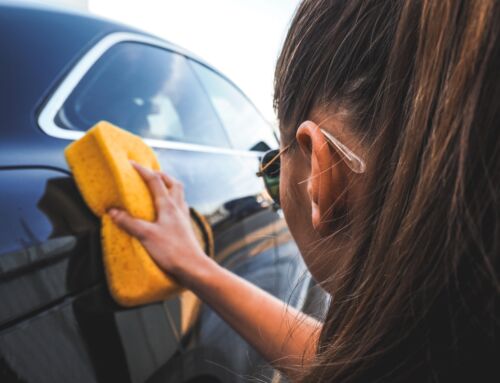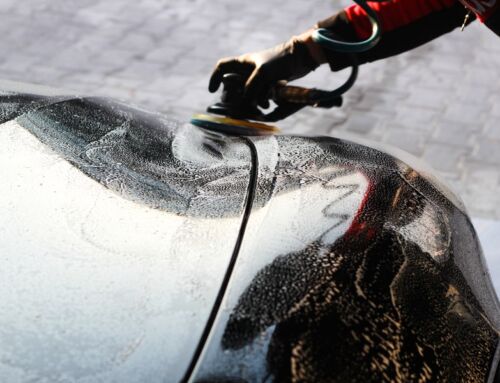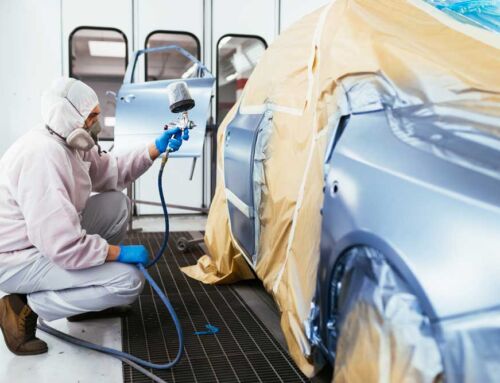How Technology in Cars is Changing the Auto BodyIndustry
Advancements in automotive technology have revolutionized the way we drive, offering safety, convenience, and cutting-edge innovation. However, these technological improvements come with an unexpected side effect: higher auto body repair costs.
Whether it’s a simple fender bender or a major collision, the intricate systems embedded in modern vehicles significantly affect repair complexity and expenses.
| Topic | Key Points |
|---|---|
| Technological Advancements | Increased use of sensors, cameras, and electronic components. |
| Impact on Repairs | More expensive and specialized tools and expertise required. |
This growing intersection between technology and repair costs is critical to understand, especially for those looking to make informed decisions after a vehicle accident.
Modern Technology’s Role in Higher Repair Costs
The modern car is more than just a mode of transportation; it is a sophisticated machine embedded with sensors, cameras, and electronic systems that improve safety and efficiency. However, these features increase repair complexity. For instance, a simple bumper replacement may now involve recalibrating backup cameras or parking sensors, adding time and cost.
Auto body shops must invest in specialized tools and training to handle the intricate components of today’s vehicles. This includes diagnostic equipment for electronic systems and the ability to work with materials like aluminum and high-strength steel, which require advanced welding techniques.
Additionally, modern vehicles often rely on Original Equipment Manufacturer (OEM) parts, which can be pricier than aftermarket alternatives. OEM parts ensure precision and compatibility, but their cost further contributes to the overall expense.
Key Factors Increasing Repair Costs:
- Integration of electronic systems, sensors, and cameras.
- Specialized training and tools required for repairs.
- Dependence on high-cost OEM parts.
As the reliance on technology grows, these factors compound, making even minor repairs a significant financial undertaking. But understanding how technology impacts repairs is just the beginning. Next, let’s explore how these trends influence auto body shop operations.
Changes in Auto Body Shop Operations
To meet the demands of modern vehicles, auto body shops like Downtown Autobody have had to adapt. This adaptation includes investing in state-of-the-art facilities and hiring highly trained technicians who understand complex systems. For example, our I-CAR Gold Class technicians are equipped to handle intricate repairs, ensuring safety and quality.
Modern auto body shops also need specialized environments for repairs. At Downtown Autobody, our unique 80-foot paint booth is capable of handling large commercial vehicles while maintaining the precision required for high-tech automotive painting processes. The precision and environmental control offered by facilities like this are essential for modern repairs.
Insurance claims have also evolved to reflect the new realities of repair costs. Collision insurance claims are becoming more common, as technological parts make even minor accidents more expensive. Understanding these claims and working closely with insurers ensures that repair costs are covered effectively.
Looking ahead, these operational changes are setting new standards for the collision repair industry, shaping how shops serve their customers. But what specific steps should car owners take to minimize costs and streamline the repair process? That’s what we’ll cover next.
Steps to Minimize Repair Costs
Understanding repair costs is one thing, but mitigating them is another. Car owners can take proactive steps to reduce expenses while ensuring quality work. First, choosing a certified repair shop is crucial. Certification like the I-CAR Gold Class indicates technicians have undergone rigorous training, ensuring your car receives expert care.
Secondly, consider reviewing your collision insurance policy. A comprehensive policy can cover high-tech repair costs, sparing you from unexpected expenses. It’s also important to communicate effectively with your insurance provider, as they can guide you toward cost-effective solutions.
Lastly, keep an eye on aftermarket parts versus OEM options. While OEM parts offer compatibility, aftermarket parts can sometimes provide cost savings. Discussing options with your repair shop can help you find the right balance between quality and affordability.
Quick Tips to Reduce Costs:
- Always opt for a certified auto body shop.
- Review and update your collision insurance policy.
- Explore the feasibility of aftermarket parts.
These steps can help car owners manage the financial burden of repairs, but they must also prioritize the quality and safety of the work performed. In the final section, we’ll summarize why it’s vital to stay informed and choose the right repair partner.
Final Thoughts
As automotive technology evolves, it’s clear that repairs are no longer as straightforward as they once were. Increased complexity, specialized tools, and the reliance on OEM parts have transformed the industry, making it essential for car owners to stay informed. By understanding the challenges of modern repairs and partnering with certified experts, drivers can ensure their vehicles are repaired safely and efficiently.
Contact Us for Expert Guidance
If you have questions about your vehicle’s repair needs or want to learn more about our services, contact Downtown Autobody. We offer free loaner cars to our customers, including college students under 25, to make the repair process as seamless as possible. Let us help you navigate the complexities of modern vehicle repair.





